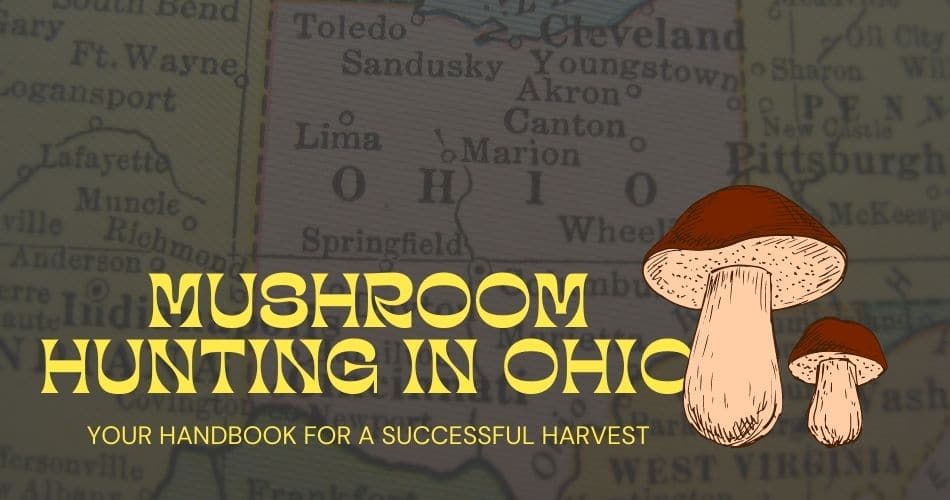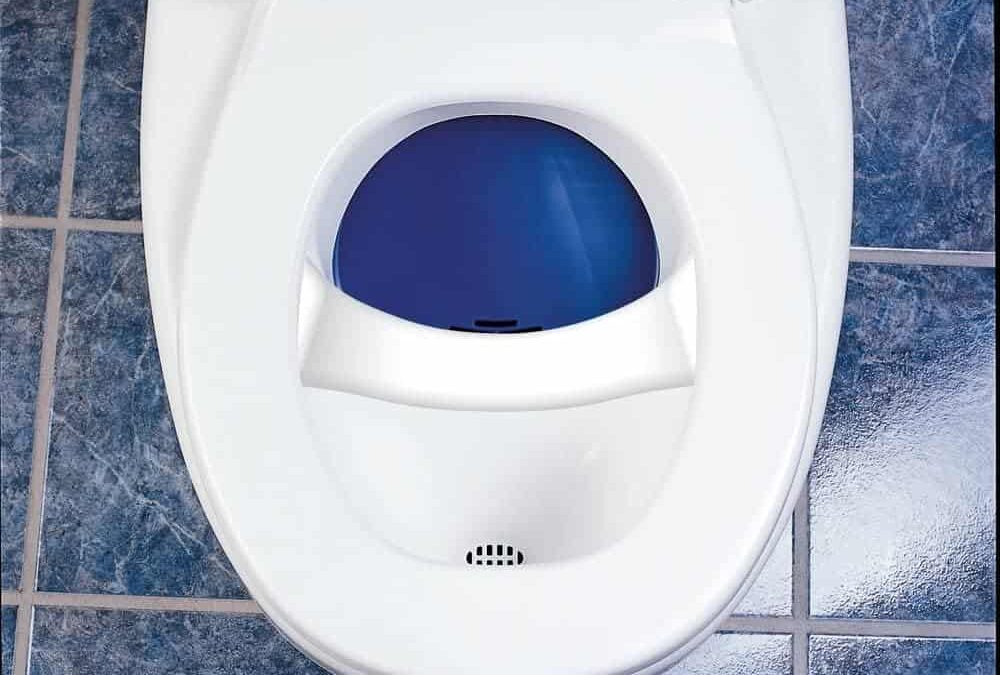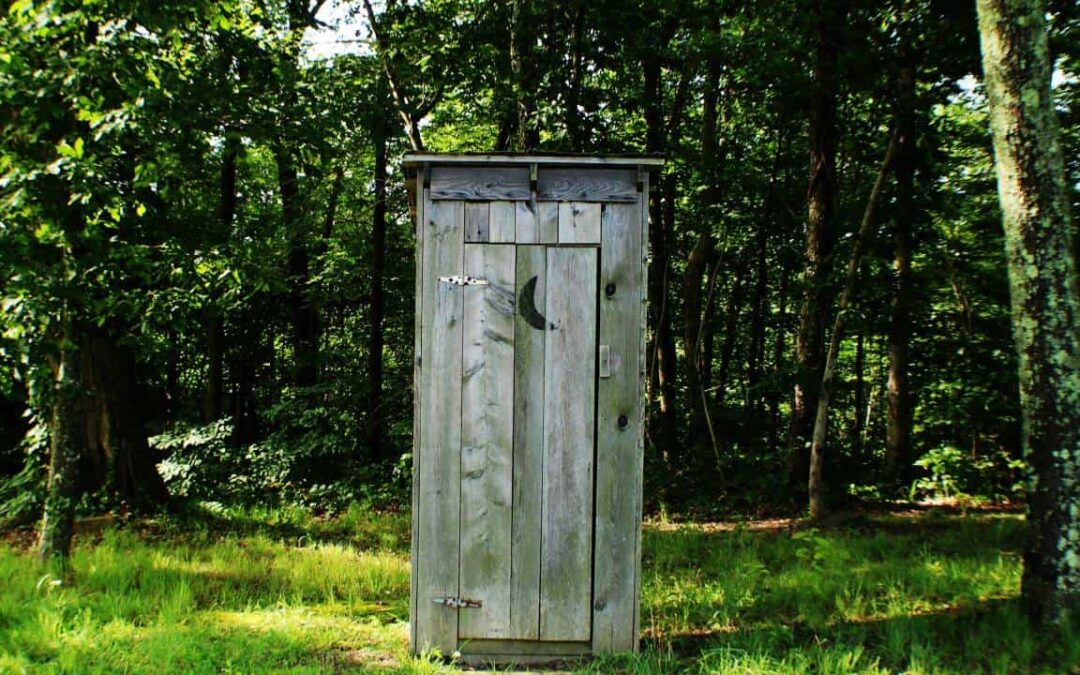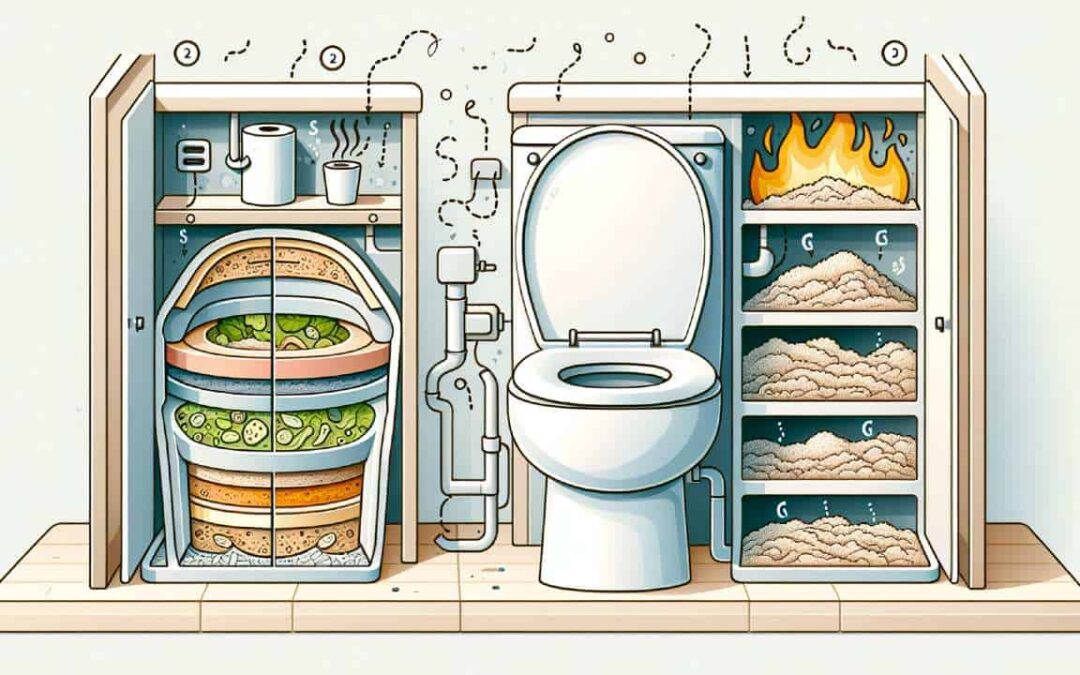Dear mushroom hunters, I invite you to read about all of the great opportunities Ohio has to offer.
This great state has a wonderful selection of year-round mushroom delicacies that would delight any up-and-coming mycologists.
You’ll find edible and non-edible varieties that many still enjoy finding and photographing.
Some types of mushrooms aren’t edible as food but can be used in tinctures and teas.
Ohio has it all.
In this piece, we will take a look into the most popular wild mushrooms this state has to offer along with some tips & tricks to tracking them down. By the end of this piece, you will feel prepped and confident before venturing into the wild.
So let’s drive into it!
Anatomy of Mushrooms Found in Ohio
Firstly, let’s be clear. There are at least 2000 different types of mushrooms that can be found in Ohio.
Even the best mushroom hunters can’t identify them all.
Beginners will want to learn some of the most common types and begin collecting those.
That said, take photos of all the mushrooms you come across and work to identify them so you can learn. You’ll find that mushrooms can be strikingly beautiful. Some can have unique aromas that remind you of peaches or nuts. Others can smell foul.
Learning about mushrooms should include learning the basics of mushroom anatomy. The top of the mushroom is known as the cap. It can be round, flat, cup-shaped, and vary in color.

Under the cap will be gills, or false gills, if they are present. Not all mushrooms have gills. You’ll learn this as you go. They play a very important role in identification.
On the stem of the mushroom, also known as the stipe, is a ring that is referred to accurately as the annulus. This is formed naturally as the mushroom erupts and grows through the veil where the gills are formed. Not all mushrooms have a visible ring on the stem.
The veil, mentioned above, is a veil-like structure that extends from the outside of the cap to the ring. It protects the gills until the mushroom is mature enough. It erupts and opens, exposing the gills so they may release spores into the environment.

Knowing Which Mushrooms Are Safe to Eat
In an effort to keep it as simple as possible for beginners, I suggest you only learn to identify a handful of mushrooms at first.
Only eat those that are easily identified and considered tried and true.
Morels
Morels are relatively easy to identify and found in Ohio. They generally appear in Spring, love hardwood trees and will be found near the Southerly side of the base of such trees.
There are false morels, however. So, you must cut your morel open from top to bottom and ensure that it is hollow inside.
A true morel will be white and hollow inside the stem and the cap. It doesn’t have gills or even looks like most other mushrooms.
But hunter be aware! There are some toxic look-alikes.
Those imposter mushrooms are referred to as false morels as a group. They also have individual names.

Morels are notorious for housing tiny bugs because of the shape and hollow nature of their caps.
It’s often recommended to cut them in half to ensure you’ve got real morels, place them in a bowl of salted water, and allow them to stand for a few hours. Then rinse them very thoroughly. This ensures any bugs are dead and rinsed out.
To prepare them, try battering with beer batter and frying them like onion rings.
They’re also delicious fried in a pan with onion, garlic, and butter. If you like mushrooms, you’ll love morels.
They’re considered quite a find and a delicacy that some people will pay a small fortune for.
Once you find a cache of them, keep going back weekly for several weeks and you’re almost guaranteed to find more.
Pro mushroom hunter tip:
Don’t tell anyone about them and you will generally be able to find them for years in the same places.
Edible Boletes in Ohio
A bolete is a mushroom of a specific shape. The domed cap, with gills underneath the cap, and stem that is most often depicted in cartoons are boletes.
Not all boletes, however, have gills.
If you come across a bolete that has a spongey-looking underside instead of gills, you might have one of the edibles.
The Sour Gold-Pored Bolete (Aureoboletus auriporus)

Notice the sponge-like underside of the cap. This mushroom is found in Northern Ohio.
The pores of this bolete are a brilliant bright yellow color. As they age, they will turn a dull red color.
When the cap skin is removed, there is a pinkish layer of color. The flesh inside of the cap will be a whitish-yellow. The stem of this species tends to be quite long. Touching the skin of the cap to your tongue should taste sour. These are safe to eat.
Clustered Brown Bolete (Aureoboletus innixus)

Clustered Brown Boletes have a characteristic sponge visible under the cap with large pores. Note how it connects directly to the stem.
The cap of this mushroom is convex, like a shallow bowl. It has a very strong smell. It always grows in clusters and the caps will be three to eight centimeters in width.
The bright yellow pore surface under the cap can turn darker as it ages. It rarely grows more than two inches tall.
*The spore print is olive-brown in color. I will explain how to obtain a spore print below. This is utilized by mycologists and hobby mycologists to properly identify mushrooms and is one more layer of safety.
Shaggy Stalked Bolete (Boletellus betula)

This mushroom likes the Appalachians.
It can be found at the base of Oak trees and in mixed wooded areas containing Oak and Pine trees.
The cap can range from yellow to deep red. It has a long stem that rarely grows perfectly straight; it has a slight curve.
It has very deep pores on the underside of the cap and is considered a good edible mushroom that can be found in Ohio.
It is definitely one of the coolest-looking mushrooms, most certainly. The flesh inside of this mushroom is a greenish-yellow.
When You Should Go Mushroom Hunting Ohio
Many species of mushrooms are available at various times of the year, but conditions must be right. Spring and Summer mushrooms love a good rain and a bit of humidity. Most mushroom enthusiasts prefer to head to the forest after a good rain has fallen.
Within 24 to 48 hours after a nice rainfall, many species of mushrooms will appear to crop up overnight. Some can appear and reach maturity within days. Therefore, the window of opportunity might possibly be short, depending on your weather.
Be ready to head out the day after it rains, be sure of what you’re looking for; take lots of photos of where you find them, tops, bottoms, and stems. Use phone apps to help you identify but don’t count on them to be accurate. Ask experts online in group forums, use spore prints when necessary, and always err on the side of caution.
Getting Spore Prints to Identify Some Species of Mushrooms
Some people make spore prints of mushrooms as art and frame them. They do look very artistic and can range in colors from bright purples and reds to subtle browns and earthier tones.
One of the main reasons why you might want to learn to take spore prints is because certain species of mushrooms will have the same color of prints.
The design, on the other hand, will help identify your mushrooms accurately.
It might sound highly scientific and even difficult to do…
But it’s not, I promise!
In fact, this is a great art project you can do with children, just for fun.
What you need:
- A nice sheet of white paper
- An eyedropper
- A glass of water
- Some hair spray
- Aluminum foil
That’s all you need to make your print, besides the mushroom itself.
First, remove the stem from the cap and lay your mushroom with the gills or pore side down on the paper. Place a drop of water on top of the mushroom’s cap.
Cover the mushroom and paper with a glass bowl or cup, depending on how large your mushroom is.
Leave it alone for up to 24 hours.
It depends on the humidity and the weather how long it will take for your mushroom to release the spores, so I try to leave them overnight.
When you uncover your mushroom, you’ll have a perfect impression of the spores and their color on the paper.
If you’d like to preserve this for keeping as art, spray it with hairspray and place it in a frame.
If you are attempting an identification, you can now search for spore prints of the types of mushrooms you think you have found and compare them to yours for accuracy. The color and shape of the print are like a fingerprint, telling you without a doubt what this mysterious fungus is.
Try it for fun!
Below is an example of a spore print. Half the mushroom cap was removed so that you can see the mushroom and its spore print together.

This is a great way to have fun and learn your new hobby.
Mycologists will often use a glass slide to collect spores in this fashion so they may view them under a microscope.
Some species of fungi are very difficult to identify. Others are still being discovered.
Your spore print might not have nearly as many spores as this example. It depends upon the age of your mushroom specimen, the altitude at which it was found, as well as your local humidity.
Generally, most will yield some results.
Here is an example of a poster with mushroom spore art:

As you can see, the spores can be in all different colors and patterns. This can help properly identify many species of mushrooms or create wall art for your home.
Allowing Spores to Do What They Do
Now that you’ve seen the microscopic spores in action, it’s important that you know mushrooms use these to multiply.
Spores are the way they recreate themselves, like the seed of a plant.
It is highly recommended that you collect your mushrooms during your hunting in a basket or breathable material that will allow the spores to continue spreading as you are walking around.
This helps to ensure that more mushrooms continue to be found for yourself and others over the years.
Many mushroom hunters take this very seriously because it ensures a good harvest the next time they go hunting.
So, when you are out finding the mushrooms you desire, don’t forget to allow them to spread their spores as you walk back to your car.
It’s the least that you can do. It’s ethical to ensure future mushroom hunters have an opportunity to find them one day.
Final Words…
In this piece, we covered the anatomy of a mushroom, 2 edible species of wild mushrooms that are edible in Ohio, the best times to hunt, and the best way to identify your mushrooms.
Overall, I am sure that once you go out there to hunt, you will be hooked for life.
This site is aimed at providing the tools and knowledge base for you to live a more self-sufficient lifestyle.
Hunting for your own mushrooms is the embodiment of this kind of lifestyle!
I hope you were able to find value in this piece and possibly serve as inspiration to make it out there.
Happy hunting!
If you are interested in reading more content on the subject of mushroom hunting, check out the following pieces:



